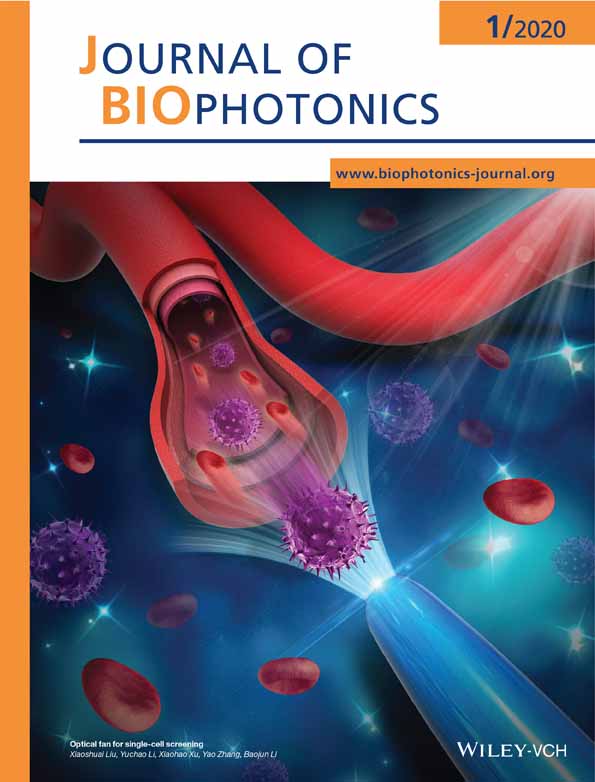Assessment of corneal viscoelasticity using elastic wave optical coherence elastography
Funding information: National Key Project of Research and Development Program of China, Grant/Award Numbers: 2016YFC0102500, 2016YFE0107000; National Natural Science Foundation of China, Grant/Award Number: 81570880; Natural Science Foundation of Zhejiang Province, Grant/Award Numbers: LY18H180008, LQ17H180004; Medical Technology and Education of Zhejiang Province, Grant/Award Number: 2019PY009; Major, Key and Innovative Guidance Topics of School of Ophthalmology and Optometry, Hospital and Research Institute of Wenzhou Medical University, Grant/Award Number: YNZD2201902
Abstract
The corneal viscoelasticity have great clinical significance, such as the early diagnosis of keratoconus. In this work, an analysis method which utilized the elastic wave velocity, frequency and energy attenuation to assess the corneal viscoelasticity is presented. Using phase-resolved optical coherence tomography, the spatial-temporal displacement map is derived. The phase velocity dispersion curve and center frequency are obtained by transforming the displacement map into the wavenumber-frequency domain through the 2D fast Fourier transform (FFT). The shear modulus is calculated through Rayleigh wave equation using the phase velocity in the high frequency. The normalized energy distribution is plotted by transforming the displacement map into the spatial-frequency domain through the 1D FFT. The energy attenuation coefficient is derived by exponential fitting to calculate the viscous modulus. Different concentrations of tissue-mimicking phantoms and porcine corneas are imaged to validate this method, which demonstrates that the method has the capability to assess the corneal viscoelasticity.
CONFLICT OF INTEREST
The authors declare no financial or commercial conflict of interest.




